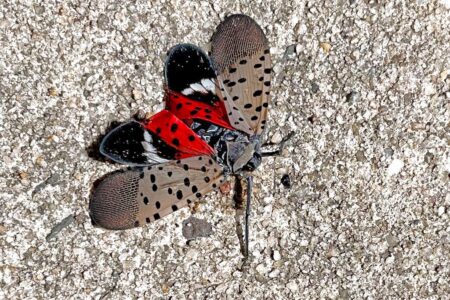Reflections in Nature: A look at staghorn sumac in the state
The staghorn sumac seed heads are beginning to change color and are now pale yellow, but as summer progresses the seed heads will become a crimson color. If you are not familiar with the staghorn sumac, it is the small tree that produces the large, crimson seed heads.
Although many people believe that this tree is poisonous, it is not. I read in the book “Shrubs and Vines for Northeastern Wildlife” that the ringneck-pheasant, quail, wild turkey and 30 species of songbirds will eat the sumac fruit.
Also, cottontail rabbits will occasionally eat the bark, and during the winter months when snow is on the ground, crows can be seen feeding on the sumac drupes.
The sumac’s short, stout branches are covered with a dense coating of hair, giving them a velvet feel. Its scientific name is rhus typhina. The rhus is both the classical Greek and Latin name for the Sicilian sumac and the Roman name for bramble, meaning red, while the species name of typhina means resembling the cattails. Typha comes from the velvety twig, which is compared to the cattail head that also has a velvety feel. The sumac’s common name of staghorn comes from the resemblance of its stout and velvety twigs covered with a dense coating of hairs, resembling the male deer’s antlers when in velvet.
The bark of the sumac is smooth, gray, and “stitched,” somewhat compared to a birch or mountain ash.
The sumac plant grows all over Pennsylvania and is possibly one of the easiest trees to identify since nothing compares to it. During the winter months, the big seed heads remain attached to the tree, making it very easy to identify, even from a distance. The seed heads, which will stay attached well into early summer, will not be found lying on the ground because the drupes fall off one at a time.
During the summer months, the velvet-feel of the stout branches make for an easy field identification mark.
The seed head is a compact cluster of red hairy drupes. Each drupe — which is about a quarter inch in diameter — is hard and contains one seed. These seed heads vary in size and number on each tree. A seed head can contain 100-700 seeds, and after counting several, I’ve concluded that an average size head will contain approximately 500 drupes.
Staghorn sumacs have both male and female trees. One can identify the sex of a tree or clone of sumac trees by the fruit heads. Although the male trees do have flowers, it is the female tree that produces the bright red seed heads.
The sumac never seems to fail in producing a crop of seeds each year. The tree can live anywhere from 5-30 years. This is tough to determine because the plant reproduces in two ways. One way is by seeds (drupes) that are scattered by birds and animals. Studies have shown that after the seed has passed through the digestive tract of either a bird or animal, it has a greater chance of germination. The second way is reproducing from the root system. A single tree is seldom seen. Most likely a clump of sumac is seen growing together, with the older stems being in the middle, and the younger trees spread out on all sides, spreading about three feet a year.
Our staghorn sumac was taken back to Europe in the 16th century, not only for its beauty but for its medicinal purposes as well. After recognizing the sumac’s tannic astringency, the Native Americans brewed a tea of the leaves to control diarrhea, check mouth bleeding and a stronger tea was used for venereal diseases. A mixture of both dried sumac leaves and cured tobacco called kinikinic, which is an Algonquin word meaning mixture, was smoked.
The sumac usually invades old fields, and a favorite place seems to be along our roadways where it does not have competition from larger trees. When the sumacs become established, they are hard to eradicate. Cutting down the sumac does nothing more than rejuvenate the stand, and sendup sprouts everywhere. Cutting is possibly the worst method when trying to eliminate the sumac.
In 1981 we purchased the house next to our home. We immediately set out to clean up the yard, by cutting down trees, mowing the grass and even pulling sumac trees out by the roots. However, every year since we still find where a young sumac is sending up a sprout. I’m positive the sumac roots are still there and alive, and if the yard is not maintained, the sumac will rise again.
If a twig is cut off a sumac tree, a gummy secretion, which turns black upon contact with the air will exude. It is often believed that the staghorn sumac is poisonous and this is possibly because of its close relative: poison sumac rhus vernix, which produces a burning rash when contacting the skin.
At first glance, it appears as the staghorn, with similar colored bark and leaves and generally the same height. Contact with this plant is more unpleasant than contact with poison ivy, however, just as most poisonous species, this plant has whitish drooping fruit, making them easily identifiable from the non-poisonous sumac.
Poison sumac does grow in northern Pennsylvania and prefers to grow in wooded, swampy areas.
Bill Bower is a retired Pennsylvania Game Commission Wildlife Officer. Read his blog and listen to his podcasts on the outdoors at www.onemaningreen.com.



